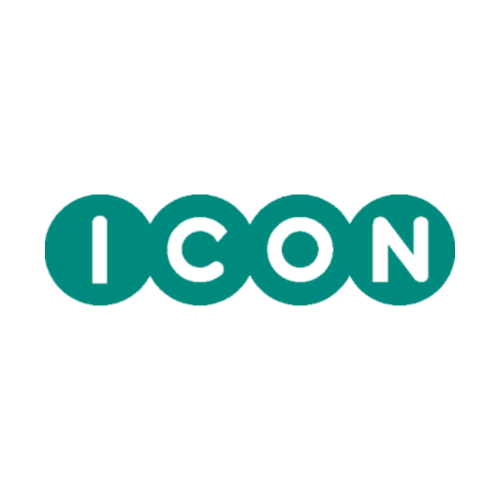.png?v=1c9cb15e568f7689a498e55b2f7c4ea0)
Fostering Diversity: Building an Inclusive Workplace

Promoting diversity and inclusion in the workplace has become a critical priority for organisations across the globe. In today's rapidly evolving business landscape, fostering an inclusive work environment is not only a moral imperative but also a strategic necessity.This article explores the importance of diversity, the meaning of inclusivity in the workplace, and the steps organisations can take to build a truly inclusive culture.
The Importance of Fostering Diversity in the Workplace
Diversity in the workplace encompasses a wide range of attributes, including but not limited to race, ethnicity, gender, age, religion, sexual orientation, disability, and socioeconomic background. When an organisation embraces and celebrates this diversity, it not only creates a more equitable and just environment but also unlocks a wealth of benefits.
Diverse teams have been shown to be more innovative, creative, and better able to solve complex problems. By bringing together individuals with different perspectives, experiences, and skill sets, organisations can tap into a broader pool of talent and generate more innovative solutions. Additionally, a diverse workforce better reflects the diversity of the customer base, enabling organisations to better understand and serve their clients.
Moreover, a diverse and inclusive workplace can enhance employee engagement, job satisfaction, and retention. When employees feel valued, respected, and empowered, they are more likely to be committed to the organisation's success and contribute to its growth.
What Does Inclusivity Mean in the Context of Workplace Culture?
Inclusivity in the workplace goes beyond mere diversity - it is about creating an environment where all employees feel a sense of belonging, where their unique contributions are valued, and where they can thrive and reach their full potential. An inclusive workplace culture is one that actively promotes the following:
- Equity: Ensuring that all employees have access to the same opportunities, resources, and support, regardless of their background or personal characteristics.
- Psychological Safety: Fostering an environment where employees feel safe to take risks, express their ideas, and voice their concerns without fear of judgement or retribution.
- Representation: Ensuring that the organisation's leadership and decision-making bodies reflect the diversity of the workforce and the broader community.
- Allyship: Encouraging all employees to be active allies and advocates for their colleagues, standing up against discrimination and supporting one another.
- Continuous Learning: Providing ongoing training and education to help employees develop a deeper understanding of diversity, inclusion, and cultural competence.
By embracing these principles, organisations can create a workplace culture that empowers all employees to thrive and contribute to the organisation's success.
The Benefits of Building an Inclusive Workplace Culture
The benefits of building an inclusive workplace culture are numerous and far-reaching. Some of the key advantages include:
- Improved Innovation and Problem-Solving: As mentioned earlier, diverse teams are more innovative and better equipped to tackle complex challenges. By harnessing the unique perspectives and experiences of a diverse workforce, organisations can unlock new avenues for growth and innovation.
- Enhanced Employee Engagement and Retention: Employees who feel valued, respected, and empowered are more likely to be engaged, productive, and committed to the organisation's success. This, in turn, can lead to lower turnover rates and a more stable, experienced workforce.
- Stronger Brand Reputation and Customer Loyalty: Organisations that are known for their commitment to diversity and inclusion often enjoy a stronger brand reputation, which can translate into greater customer loyalty and a competitive advantage in the marketplace.
- Compliance with Diversity and Inclusion Regulations: In many countries, there are laws and regulations in place that require organisations to promote diversity and inclusion in the workplace. By proactively building an inclusive culture, organisations can ensure compliance and avoid potential legal and financial consequences.
- Improved Financial Performance: Studies have shown that organisations with diverse and inclusive workforces tend to outperform their less diverse counterparts in terms of financial metrics, such as profitability and shareholder returns.

Strategies for Promoting Diversity and Inclusion
Promoting diversity and inclusion in the workplace requires a multifaceted approach that addresses both individual and organisational levels. Here are some strategies organisations can implement:
- Inclusive Leadership Development: Investing in leadership development programs that emphasise inclusive behaviours, such as active listening, empathy, and cultural competence, can help foster a more inclusive workplace culture.
- Employee Resource Groups (ERGs): ERGs can be a powerful tool for supporting and empowering underrepresented employees. These groups can also serve as valuable resources for the organisation, providing insights and recommendations on diversity and inclusion initiatives.
- Diversity and Inclusion Committees: Establishing a dedicated diversity and inclusion committee, with representatives from across the organisation, can help ensure that diversity and inclusion remain a strategic priority and that initiatives are implemented effectively.
- Targeted Recruitment and Outreach: Organisations should actively seek out and engage with diverse talent pools, such as historically Black colleges and universities (HBCUs), women's professional networks, and disability-focused organisations, to build a more diverse pipeline of candidates.
- Allyship and Advocacy: Encouraging all employees to be active allies and advocates for their colleagues can help create a more inclusive workplace culture. This may include providing training on how to be an effective ally, as well as recognising and rewarding employees who demonstrate allyship behaviours.
Breaking Down Barriers to Diversity and Inclusion
Despite the many benefits of building an inclusive workplace culture, organisations may face various barriers and challenges in their efforts to promote diversity and inclusion. Some of the common barriers include:
- Unconscious Bias: As mentioned earlier, unconscious biases can have a significant impact on hiring, promotion, and decision-making processes. Overcoming these biases requires a concerted effort and ongoing education.
- Lack of Representation in Leadership: If the organisation's leadership does not reflect the diversity of the workforce and the broader community, it can be challenging to build a truly inclusive culture.
- Resistance to Change: Some employees may be resistant to changes in the workplace culture, particularly if they perceive these changes as a threat to their own status or privilege.
- Lack of Accountability: Without clear metrics, KPIs, and accountability measures, diversity and inclusion initiatives may lack the necessary support and commitment from the organisation's leadership.
- Inadequate Resources and Funding: Implementing effective diversity and inclusion programs can require significant investment in terms of time, money, and other resources. Organisations that do not allocate sufficient resources to these initiatives may struggle to achieve their goals.
To overcome these barriers, organisations must take a proactive and holistic approach, addressing both the individual and systemic factors that contribute to a lack of diversity and inclusion.
The Role of Leadership in Building an Inclusive Workplace Culture
The role of leadership in building an inclusive workplace culture cannot be overstated. Leaders at all levels of the organisation must demonstrate a genuine commitment to diversity and inclusion, and they must be willing to champion and model inclusive behaviours. Some key responsibilities of leaders in building an inclusive workplace culture include:
- Setting the Tone: Leaders must clearly communicate the organisation's commitment to diversity and inclusion, and they must be visible advocates for these values.
- Driving Accountability: Leaders must establish clear metrics and KPIs for diversity and inclusion initiatives, and they must hold themselves and their teams accountable for progress.
- Fostering Psychological Safety: Leaders must create an environment where employees feel safe to take risks, express their ideas, and voice their concerns without fear of judgement or retribution.
- Championing Inclusive Practices: Leaders must actively promote and implement inclusive policies, practices, and programs, and they must ensure that these initiatives are integrated into the organisation's core operations.
- Developing Inclusive Leadership Skills: Leaders must continually develop their own skills and competencies in areas such as cultural awareness, empathy, and effective communication, in order to model inclusive behaviours and support the development of inclusive leaders at all levels of the organisation.
By demonstrating a steadfast commitment to diversity and inclusion, and by empowering and supporting their teams to do the same, leaders can play a crucial role in building a truly inclusive workplace culture.
Training and Education for Diversity and Inclusion in the Workplace
Effective training and education are essential for building a diverse and inclusive workplace culture. Organisations should invest in a range of training programs and educational initiatives to help employees develop the knowledge, skills, and mindsets necessary to thrive in an inclusive environment. Some key elements of effective diversity and inclusion training and education include:
- Unconscious Bias Training: Helping employees recognise and address their own unconscious biases can be a powerful tool for promoting more equitable and inclusive decision-making.
- Cultural Competence Training: Providing employees with a deeper understanding of different cultures, customs, and communication styles can help foster greater cross-cultural understanding and collaboration.
- Allyship and Advocacy Training: Equipping employees with the skills and knowledge to be effective allies and advocates for their colleagues can contribute to a more inclusive workplace culture.
- Inclusive Leadership Development: Investing in leadership development programs that emphasise inclusive behaviours, such as active listening, empathy, and effective communication, can help cultivate a new generation of inclusive leaders.
- Ongoing Learning and Development: Organisations should provide ongoing opportunities for employees to engage in diversity and inclusion-related learning, such as workshops, guest speaker events, and self-directed online courses.
Prioritising training and education aids organisations to empower their employees to develop the necessary skills and mindsets to thrive in an inclusive workplace culture.
Conclusion
Fostering diversity and building an inclusive workplace culture is not only a moral imperative but also a strategic necessity for organisations in today's rapidly evolving business landscape. By embracing and celebrating the diversity of their workforce, organisations can unlock a wealth of benefits, including enhanced innovation, improved employee engagement and retention, and stronger brand reputation and customer loyalty.
To create an inclusive workplace culture, organisations must adopt a holistic approach that addresses both individual and systemic factors. This includes implementing inclusive hiring practices, offering mentorship and sponsorship programs, providing diversity and inclusion training, and encouraging employee resource groups and diversity committees.
Importantly, the role of leadership in building an inclusive workplace culture cannot be overstated. Leaders at all levels of the organisation must demonstrate a genuine commitment to diversity and inclusion, and they must be willing to champion and model inclusive behaviours.
To learn more about ICON's commitment to creating a Diverse and Inclusive workplace, visit our dedicated D&I page today.
Sign up for post alerts
ICON & You
The potential of together.
Careers that improve the lives of patients, our clients and each other. Are you ready to make a difference?
View jobsRelated jobs at ICON
Salary
Location
Netherlands, Utrecht, Zen
Department
Clinical Monitoring
Real World Solutions
Location
Utrecht
Remote Working
Office or Home
Business Area
ICON Full Service & Corporate Support
Job Categories
Clinical Monitoring
Job Type
Permanent
Description
ICON plc is a global healthcare intelligence and clinical research organization, committed to innovation, excellence, and inclusion. Join our mission to advance clinical development across a broad ran
Reference
JR138391
Expiry date
01/01/0001

Author
Jakob Schonberger
Author
Jakob SchonbergerSalary
Location
US, Blue Bell (ICON)
Location
Blue Bell
Remote Working
Remote
Business Area
ICON Strategic Solutions
Job Categories
Clinical Trial Support
Job Type
Permanent
Description
We are currently seeking a CTA to join our diverse and dynamic team. As a CTA at ICON, you will play a pivotal role in assisting with the design and analysis of clinical trials, interpreting complex m
Reference
JR141316
Expiry date
01/01/0001

Author
Brandon Pupek
Author
Brandon PupekSalary
Location
Malaysia, Kuala Lumpur
Location
Kuala Lumpur
Remote Working
Office or Home
Business Area
ICON Strategic Solutions
Job Categories
Clinical Monitoring
Job Type
Permanent
Description
We are currently seeking a Clinical Research Associate II to join our diverse and dynamic team. As a Clinical Research Associate II at ICON, you will play a pivotal role in designing and analyzing cli
Reference
JR139252
Expiry date
01/01/0001

Author
Sitti Lim
Author
Sitti LimSalary
Location
UK, Reading
Department
Full Service - Biometrics
Location
Reading
Remote Working
Remote
Business Area
ICON Strategic Solutions
Job Categories
Medical Data Review
Job Type
Permanent
Description
ICON plc is a world-leading healthcare intelligence and clinical research organisation. From molecule to medicine, we advance clinical research providing outsourced services to pharmaceutical, biotech
Reference
JR141330
Expiry date
01/01/0001

Author
Niki Scotto
Author
Niki ScottoRelated stories
.png)
Teaser label
Our PeopleContent type
BlogsPublish date
12/10/2025
Summary
Zhong Yao's Journey at ICON Plc in China Zhong Yao's career in clinical research spans over two decades, with leadership roles across major CROs and a commitment to advancing healthcare in China.
.png)
Teaser label
IndustryContent type
BlogsPublish date
12/01/2025
Summary
How Data Moves Through a Clinical Trial Clinical research depends on one essential element: trustworthy data. Every safety decision, every statistical conclusion and every regulatory submission i
.png)
Teaser label
IndustryContent type
BlogsPublish date
11/28/2025
Summary
Quality and Compliance for New Entrants: A Plain Language Guide Quality and compliance can feel like dense subjects when you are entering clinical research for the first time. Many job
Recently viewed jobs
Impactful work. Meaningful careers. Quality rewards.
At ICON, our employees are our greatest strength. That’s why we are committed to empowering you to live your best life, both inside and outside of work. Whether your ambition is lead a global team, become a deep scientific or technical expert, work in-house with our customers or gain experience in a variety of different ICON functions, we will support you in realising your full potential. Learn more about Our Culture at ICON
